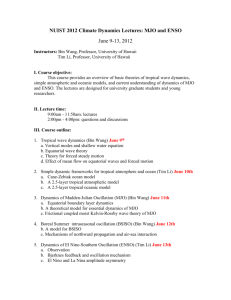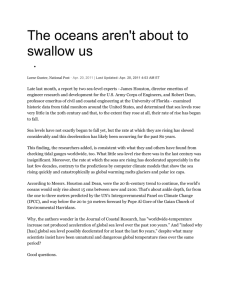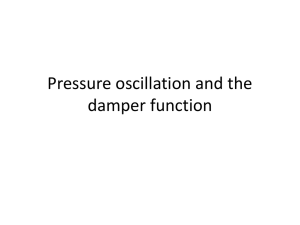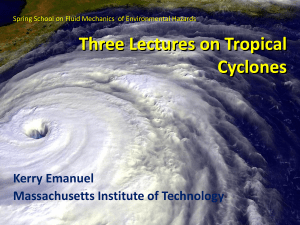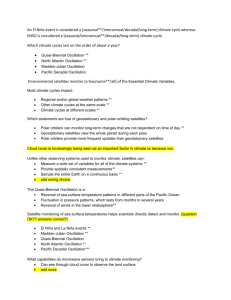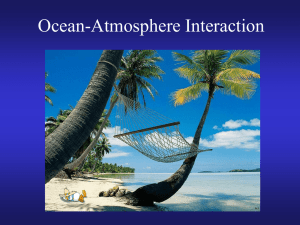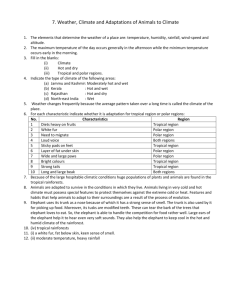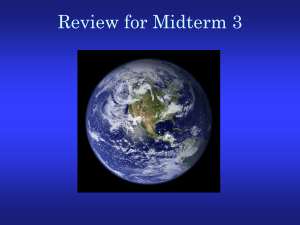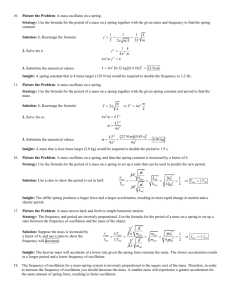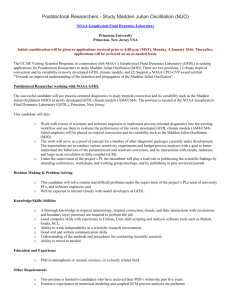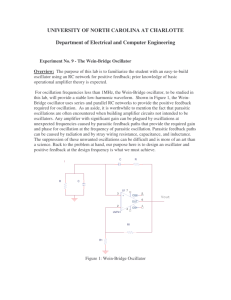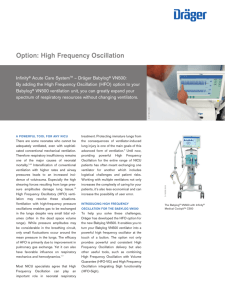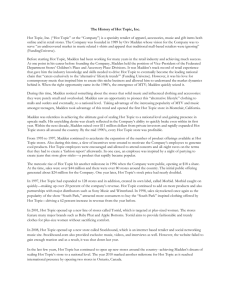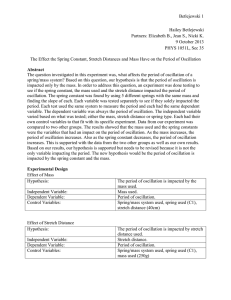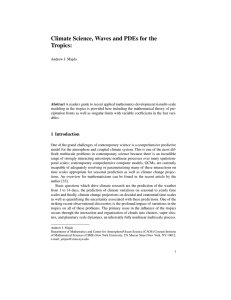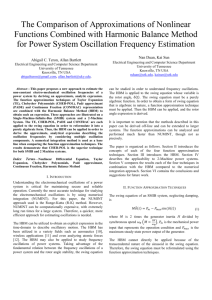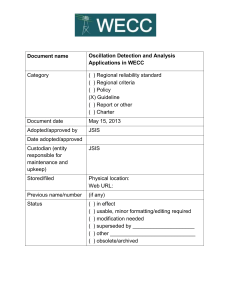K-SEC Meeting Summary October 5, 2015 Here is a summary of the
advertisement
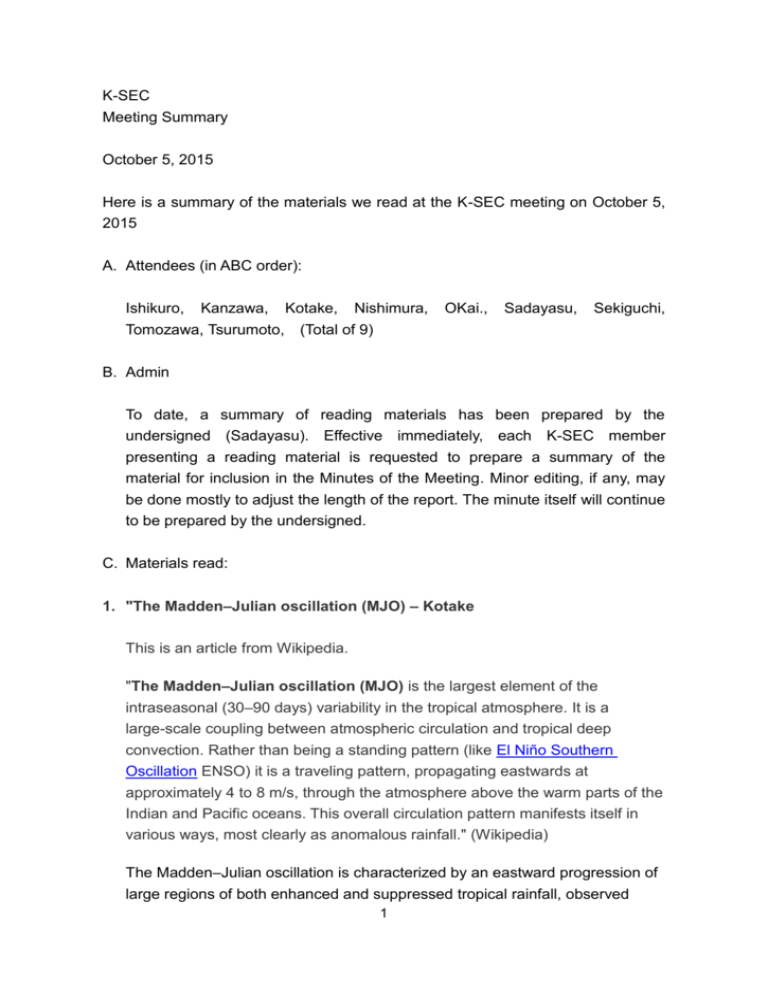
K-SEC Meeting Summary October 5, 2015 Here is a summary of the materials we read at the K-SEC meeting on October 5, 2015 A. Attendees (in ABC order): Ishikuro, Kanzawa, Tomozawa, Tsurumoto, Kotake, Nishimura, OKai., Sadayasu, Sekiguchi, (Total of 9) B. Admin To date, a summary of reading materials has been prepared by the undersigned (Sadayasu). Effective immediately, each K-SEC member presenting a reading material is requested to prepare a summary of the material for inclusion in the Minutes of the Meeting. Minor editing, if any, may be done mostly to adjust the length of the report. The minute itself will continue to be prepared by the undersigned. C. Materials read: 1. "The Madden–Julian oscillation (MJO) – Kotake This is an article from Wikipedia. "The Madden–Julian oscillation (MJO) is the largest element of the intraseasonal (30–90 days) variability in the tropical atmosphere. It is a large-scale coupling between atmospheric circulation and tropical deep convection. Rather than being a standing pattern (like El Niño Southern Oscillation ENSO) it is a traveling pattern, propagating eastwards at approximately 4 to 8 m/s, through the atmosphere above the warm parts of the Indian and Pacific oceans. This overall circulation pattern manifests itself in various ways, most clearly as anomalous rainfall." (Wikipedia) The Madden–Julian oscillation is characterized by an eastward progression of large regions of both enhanced and suppressed tropical rainfall, observed 1 mainly over the Indian and Pacific Ocean. The anomalous rainfall is usually first evident over the western Indian Ocean, and remains evident as it propagates over the very warm ocean waters of the western and central tropical Pacific. This pattern of tropical rainfall then generally becomes nondescript as it moves over the cooler ocean waters of the eastern Pacific (except over the region of warmer water off the west coast of Central America) but occasionally reappears at low amplitude over the tropical Atlantic and higher amplitude over the Indian Ocean. The wet phase of enhanced convection and precipitation is followed by a dry phase where thunderstorm activity is suppressed. Each cycle lasts approximately 30–60 days. Because of this pattern, The Madden–Julian oscillation is also known as the 30–60 day oscillation, 30–60 day wave, or intraseasonal oscillation. There is case-to-case variability in the amplitude and longitudinal extent of the MJO-related precipitation, so this should be viewed as a general relationship only. 2. New security-related bills to enhance Japan’s safety and Nation can better contribute to world peace – Nishimura This is a Japan News article dated September 20, 2015. New security legislation will further ensure the safety of Japan by enhancing the Japan-U.S. alliance and Japan's partnerships with the international community. Japan must enhance its deterrent power with a stronger Japan-U.S. alliance and have a strategic foreign policy in cooperation with concerned countries to maintain stability and prosperity in Asia, to make North Korea refrain from military provocations, and to make China refrain from hegemonic actions. Against the background of many constitutional scholars denouncing the security bills as “unconstitutional," there actually exist anxiety and bewilderment among the general public. The bills, however, maintain logical consistency with a Supreme Court ruling of 1959 and the government's constitutional interpretation of 1972 and ensure legal stability. Of course, the government must continue tenacious efforts to obtain wider understanding of the security legislation from the people while explaining the significance and content of the legislation in an understandable manner. 2 Efforts should be taken to help boost the workability of the security legislation and enhance the capabilities of the SDF to deal with various situations seamlessly and expeditiously. C. Role assignment for October 19, 2015 Nishiwaki Tsurumoto 3
